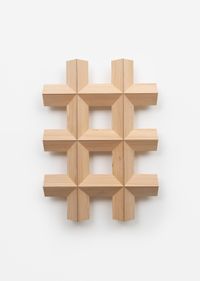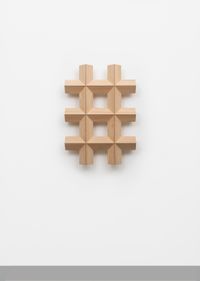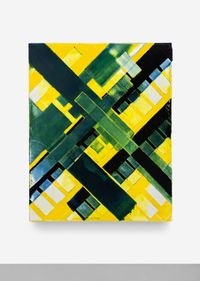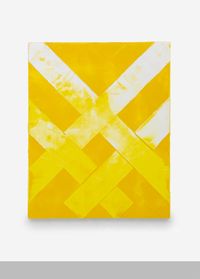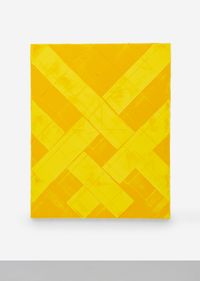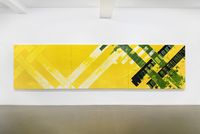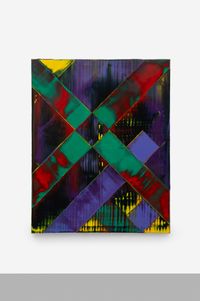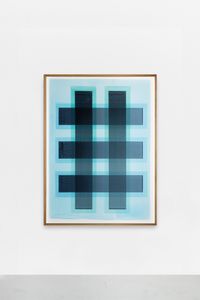Fabrice Gygi is one of the most important Swiss artists of his generation. Coming from the ultra-radical movement of Geneva squats, both his life and work are pervaded by a general rejection of the social order. He became known through performances in which he explores his body's limits. Trained in engraving by the Geneva center for contemporary engraving and then at the école des Beaux-Arts, he began a major production of engravings and linocuts. From the 90s, gradually evolving from a discourse linked to the intimate sphere to a discourse involving society as a whole, he developed an ensemble of installations and sculptures carrying in them a potential of constraint and control over individuals. Within a minimalist formal vocabulary borrowed to urban infrastructure, as well as common and nomadic objects, he distorts from their primary functions, thus manifesting an ambiguity as a source of tension. He leads us to the thought of civil obedience and raises questions about our Western ideal of freedom. 'My attitude is more of a political commitment than my work itself. My work is kind of like the tip of the iceberg, which you can see. It speaks of politics because politics is part of life. We are in this world, so we are political. But it is not a committed or militant work, because for me it would mean having a moral on things, which I refuse categorically.' Fabrice Gygi (in Interview with Fabrice Gygi, NOMAD Magazine, vimeo, 2011).
Read MoreFrom the early 2010s, Fabrice Gygi initiates a rupture in his work by abandoning the creation of installations. Though the production of jewellery, then of sculptures and bas-reliefs with geometrical elementary forms, he focuses on the search for abstract and pure lines. At the same time, he began to work on large format watercolours. With a perfectly geometric composition, these watercolours on paper offer a limited chromatic range and once again reveal a tension between the material and the control and rigour of its use.
Major institutional exhibitions by Fabrice Gygi include Les églises, Centre d'art contemporain, Chelles (2013); Centre Culturel Suisse, Paris (2013); Instituto Svizzero di Roma (2010); Magasin 3, Stockholm Konsthall (2006); Orange County Museum of Art, Newport Beach (2005); Kunstmuseum St. Gallen (2005); MAMCO Geneva (2004); Museum of Contemporary Art, Tucson (2001).
His work was placed in the centre of group shows in several international institutions such as the Kunstmusem Olten (2018); Musée d'Art Moderne de Paris (2017); Kunsthaus Zurich (2015); Swiss Institute, New York (2015); Palais de Tokyo, Paris (2011); Musée d'Art Contemporain de Lyon (2007); Migros museum für gegenwartskunst, Zürich (2007); Museum Ludwig, Köln (2005); Museo Nacional Reina Sofia (2003); 25th Biennial of Ljubljana (2003); Villa Médicis, Rome (2002); Kunsthaus Bregenz (2000); MoMA PS1 (1998); Kunsthalle Bern (1996). In 2009, he was invited to represent Switzerland at the 53rd International Art Biennial in Venice.
Fabrice Gygi's works were acquired by numerous collections including the MAMCO, Geneva; Mudac, Lausanne; Migros Museum, Zurich; M KHA, Antwerp; Magasin 3, Stockholm; Musée National d'Art Moderne, Centre Georges Pompidou, Paris; FRAC Ile de France — Le Plateau, Paris; FRAC Normandie — Rouen and the Centre national des arts plastiques.
Born in 1965 in Geneva, Switzerland, Fabrice Gygi lives and works in Geneva.
Text courtesy Galerie Chantal Crousel.
